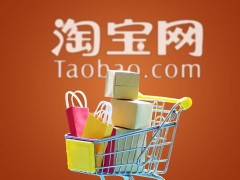How do Amazon sellers cross-sell two products?
亚马逊卖家可以通过多种方式进行两件产品的关联营销,以增加销售和提高产品的曝光度。
以下是一些策略:
1. **捆绑销售**:创建一个包含两件相关商品的捆绑产品。例如,如果你卖手机壳,可以和屏幕保护膜一起捆绑销售。
2. **跨销售(Cross-Selling)**:在一件商品的描述中推荐另一件相关的商品。例如,在相机描述页推荐购买存储卡。
3. **上/下销售(Up-Selling 或 Down-Selling)**:如果顾客查看的是一件低价商品,可以推荐更高价的商品(上销售);反之,如果顾客查看的是一件高价商品,可以推荐更便宜的商品(下销售)。
4. **使用亚马逊广告**:通过亚马逊的广告服务,如Sponsored Products或Sponsored Display Ads,来推广你的产品。
5. **利用产品插入页**:在你的产品包装中插入推荐卡片,上面印有其他相关产品的信息和二维码,顾客扫描后可以直接在亚马逊上查看或购买。
6. **建立自己的品牌店铺**:在一个品牌店铺中展示所有相关产品,通过店内营销活动来推广产品组合。
7. **优化关键词**:在产品标题、描述和后台搜索关键词中使用相关的关键词,以便当顾客搜索其中一件产品时,另一件相关产品也能出现在搜索结果中。
8. **参与亚马逊的促销活动**:如“买一送一”、“打折促销”等,吸引顾客购买更多产品。
9. **使用亚马逊的Detail Page Interactive Content功能**:在产品详情页上添加视频、图片画廊等互动内容,展示产品的不同使用方法或与其他产品的搭配效果。
10. **社交媒体营销**:在社交媒体上发布产品使用案例,展示两件产品一起使用的好处。
11. **电子邮件营销**:向已经购买过你产品的顾客发送电子邮件,推荐他们购买与已购产品相关的其他商品。
12. **顾客评价**:鼓励顾客在购买两件相关产品后留下评价,这些评价可以作为其他顾客的参考。
在进行关联营销时,重要的是确保推荐的产品与原产品相关且对顾客有实际价值,这样才能提高转化率并建立顾客的信任。同时,遵守亚马逊的规则和政策,避免任何违规的营销行为。
Professional answer
Amazon sellers can cross-sell two products in a variety of ways to increase sales and improve product exposure.
Here are some strategies:
1. **Bundle sales**: Create a bundled product that includes two related items. For example, if you sell phone cases, you can sell them together with screen protectors.
2. **Cross-Selling**: Recommend another related product in the description of one product. For example, recommend buying a memory card on the camera description page.
3. **Up-Selling or Down-Selling**: If a customer is viewing a low-priced product, you can recommend a higher-priced product (up-selling); conversely, if a customer is viewing a high-priced product, you can recommend a cheaper product (down-selling).
4. **Use Amazon Advertising**: Promote your products through Amazon's advertising services, such as Sponsored Products or Sponsored Display Ads.
5. **Use product inserts**: Insert recommendation cards in your product packaging with information and QR codes of other related products. Customers can scan them and view or purchase them directly on Amazon.
6. **Build your own brand store**: Display all related products in one brand store and promote product combinations through in-store marketing activities.
7. **Optimize keywords**: Use relevant keywords in product titles, descriptions, and backend search keywords so that when customers search for one of the products, the other related product can also appear in the search results.
8. **Participate in Amazon's promotional activities**: Such as "buy one get one free" and "discount promotions" to attract customers to buy more products.
9. **Use Amazon's Detail Page Interactive Content feature**: Add interactive content such as videos and photo galleries on the product detail page to show different ways to use the product or how it works with other products.
10. **Social media marketing**: Post product use cases on social media to show the benefits of using two products together.
11. **Email Marketing**: Send emails to customers who have already purchased your product, recommending them to buy other products related to the product they have already purchased.
12. **Customer Reviews**: Encourage customers to leave reviews after purchasing two related products, which can be used as a reference for other customers.
When doing cross-marketing, it is important to ensure that the recommended products are related to the original product and have real value to the customer, so as to increase conversion rates and build customer trust. At the same time, comply with Amazon's rules and policies and avoid any illegal marketing practices.
Sellers can adopt some of the following strategies:
1. **Bundling**: Create bundles to sell complementary products together and set preferential prices to attract buyers.
2. **Combination discounts**: Offer discounts for combined purchases to encourage customers to buy two products at the same time. This can be achieved through Amazon's promotional tools.
3. **Use "Frequently Bought Together" (FBT): If customers often buy two of your products together, Amazon may automatically list them as "Frequently Bought Together" to increase sales.
4. **Optimize product detail pages**: Mention related products in the product description and use pictures and text to explain how to use them together to increase the appeal of the product.
5. **Cross-product recommendations**: Showcase your other products in the "Related Products" or "Customers Also Bought" sections of your product detail page.
6. **Use background search terms**: Add information about another product related to your product to the search keywords in the product background to help improve search rankings and opportunities for related sales.
7. **Advertising promotion**: Use Amazon's advertising services (such as Sponsored Products) to promote your products and highlight the relevance between products in the advertising content.
8. **Social media promotion**: Promote your product portfolio on social media platforms, and show the scenes when the products are used together through stories, posts or videos.
9. **Email marketing**: Send emails to customers who have purchased a certain product, recommend another related product, and provide certain discounts.
10. **Product mutual promotion**: Establish cooperative relationships with other sellers and recommend each other's products on their respective product pages.
11. **Reviews and Q&A**: Mention the advantages of another product or how to use it together in product reviews and Q&A sessions to increase product exposure.
12. **Use category nodes**: Make sure both of your products are placed in relevant Amazon subcategories so that customers can see more of your products when browsing a category.
13. **Virtual bundling**: Create virtual bundles through third-party services (such as Amazon’s Virtual Product Bundle tool), which can achieve the effect of bundling sales through promotional codes even if they are not physically bundled.
When engaging in affiliate marketing, please make sure to comply with all Amazon policies and best practices and avoid any behavior that may be considered as manipulating reviews, misleading consumers, or violating Amazon’s terms.
Similar Q&A
recommend How to view sales of several months on Amazon?
E-c News Continuously pushing e-commerce knowledge to you








Latest Q&A More
-
Do I need a trademark to open a franchise store on Pinduoduo to sell books?
#Pinduoduo#
-
How to withdraw from a Pinduoduo store
#Pinduoduo#
-
How to withdraw from Pinduoduo merchants
#Pinduoduo#
-
How to pay fees when closing a Pinduoduo store
#Pinduoduo#
-
How to withdraw from Pinduoduo
#Pinduoduo#
-
Which store on Pinduoduo is authentic?
#Pinduoduo#
-
Which stores on Pinduoduo can buy genuine products?
#Pinduoduo#
-
How to check the store under Pinduoduo
#Pinduoduo#
-
How to receive Pinduoduo online game products
#Pinduoduo#
-
How to sell the electronic version on Pinduoduo
#Pinduoduo#
E-c News 2025-06-20 10:41:45

- African netizens use China Africa cross-border e-commerce platform for online shopping
- how is the new seller of cross-border e-commerce doing?
- how can cross-border e-commerce Amazon sell on Amazon platform without goods?
- Amazon store opening process and cost analysis!
- Amazon plans to expand its pharmacy business on a large scale and will add same day delivery service

